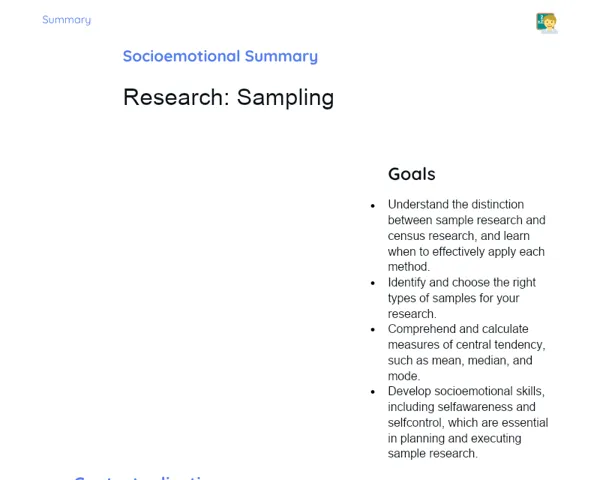Objectives
1. 🎯 Understand and apply the concept of translation in geometric objects within a two-dimensional plane or in three-dimensional space.
2. 🎯 Learn to calculate the distance between points after a translation using specific formulas.
3. 🎯 Explore and manipulate isometric and homothetic transformations to construct and analyze figures, while connecting them to practical applications across diverse fields like engineering, art, and technology.
Contextualization
Did you know that GPS technology heavily relies on translations and geometric transformations to pinpoint your location and devise the best routes? Each time your GPS figures out the quickest path, it employs translation calculations and other transformations to ensure you reach your destination efficiently and safely. This highlights how the concepts we delve into in class are vital and often play a hidden role in our everyday lives!
Important Topics
Translation
Translation is a geometric transformation that shifts all points of an object in parallel along a specified direction without altering its shape or size. It is key to understanding how objects navigate in two-dimensional or three-dimensional spaces, forming the basis for numerous practical applications, including GPS navigation and engineering design.
-
All points of the object are moved by the same distance and in the same direction, ensuring parallelism remains intact before and after the translation.
-
The distance and direction of the translation are described by vectors, facilitating a precise mathematical depiction of this movement.
-
In practice, translation models how objects behave in engineering, simulates shifts on maps, and even finds its way into the creation of artistic works.
Isometric Transformations
Isometric transformations are a category of geometric transformations that encompass translations, rotations, and reflections. These preserve distances, angles, and orientations, ensuring that the core characteristics of objects, such as shape and size, remain unchanged post-transformation. These transformations are critical in various domains, from cryptography to structural engineering.
-
They maintain the distances between all pairs of points, ensuring the original shapes of the objects are intact.
-
They are applied in cryptography to guarantee that encryption and decryption keys remain equivalent, even when the data undergoes transformation.
-
In engineering, they are utilized to plan and build structures that must retain their physical traits under various conditions.
Homothetic Transformations
Homothetic transformations, often referred to as dilations, are transformations that modify the size of objects while preserving their shape. This involves enlarging or reducing an object in relation to a stationary point, known as the center of homothety. Such transformations are vital in physics and mathematical modeling, where the scale of a system may need adjustment for analysis.
-
They retain lines that intersect the center of homothety alongside the scale factor, which indicates the extent of enlargement or contraction of the object.
-
They are employed in mathematical and physical modeling to alter the scale of complex systems, enabling better study and comprehension.
-
In practical applications, they are frequently used in art to produce visual effects and in design to resize components while preserving their proportions.
Key Terms
-
Translation: The movement of all points of an object in a specific direction, keeping the same distance between points.
-
Isometric Transformations: Include translations, rotations, and reflections, maintaining distances, angles, and orientations.
-
Homothetic Transformations: Change object sizes while preserving shape, oriented around a fixed point and a scale factor.
For Reflection
-
How can isometric transformations be harnessed to bolster data security in digital communications?
-
In what ways could a deeper understanding of translations enhance product design in engineering?
-
What significance do homothetic transformations hold in contemporary art, and how do they affect visual perception?
Important Conclusions
-
We reviewed the concept of translation and its applications in mathematics and various practical areas such as engineering and art, underlining its significance for GPS and product design.
-
We explored isometric transformations encompassing translations, rotations, and reflections, stressing how these transformations uphold distances, angles, and orientations that are crucial in cryptography and engineering.
-
We analyzed homothetic transformations, explaining how they adjust the sizes of objects while maintaining their shapes, which is vital in physical and artistic modeling.
To Exercise Knowledge
Create a small artistic project at home employing translations and/or other geometric transformations. For instance, draw a pattern that repeats by translating a basic shape and investigate how various movements can transform the look of your drawing.
Challenge
Cartographer's Challenge: With a map of your city or locality, attempt to pinpoint the coordinates of specific places and calculate how a translated point would re-position on that map. Contemplate practical scenarios, such as identifying the shortest route between two points by applying translations.
Study Tips
-
Practice sketching and shifting objects on a plane using graph paper to visualize translations and other transformations.
-
Watch videos or online tutorials illustrating practical uses of translations and isometric transformations, such as in animation and game design.
-
Try teaching a friend or relative what you learned about translations and isometric transformations. Teaching is an excellent way to reinforce your own understanding!


